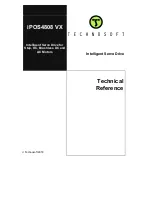
2 Installation
2.2.5 Other Precautions
2-8
2.2.5
Other Precautions
Handling Oil and Water
If the servomotor is used in a location that is subject to water or oil mist, use a servo-
motor with an oil seal to seal the through shaft section. Precautions on using a servo-
motor with an oil seal are described below.
• Put the oil surface under the oil seal lip.
• Use an oil seal in favorably lubricated condition.
• When using a servomotor with its shaft upward direction, be sure that oil will not
stay in the oil seal lips.
Cable Stress
Make sure there are no bends or tension on the motor main circuit cables and encoder
cables.
Be especially careful to wire encoder cables so that they are not subject to stress
because the core wires are very thin at only 0.2 or 0.3 mm
2
.
Connectors
Observe the following precautions:
• Make sure there is no foreign matters such as dust and metal chips in the connector
before connecting.
• When the connectors are connected to the motor, be sure to connect the end of
motor main circuit cables before connecting the encoder cable’s end.
If the encoder cable’s end is connected, the encoder may break because of the volt-
age differences between FG.
• Make sure of the pin arrangement.
• Do not apply shock to resin connectors. Otherwise, they may be damaged.
• When handling a servomotor with its cables connected, hold the servomotor or the
connectors and cables will be damaged.
• Fix the connector to SGMJV, SGMAV, SGMPS-01/-02/-04 or SGMGV-03/-05
servomotors with screws. Make sure that the connector is securely fixed with
screws.
If not, the protective construction specifications may not be satisfied.
• Be sure not to apply stress on the connector. The connector may be damaged by
stress.
Radial and Thrust loads
Design the mechanical system so thrust and radial loads applied to the servomotor
shaft end during operation fall within the allowable ranges of each motor. Refer to
Σ
-V Series Product Catalog
(KAEP S800000 42) for the allowable ranges.
















































